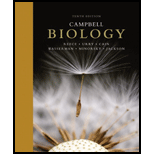
Campbell Biology (10th Edition)
10th Edition
ISBN: 9780321775658
Author: Jane B. Reece, Lisa A. Urry, Michael L. Cain, Steven A. Wasserman, Peter V. Minorsky, Robert B. Jackson
Publisher: PEARSON
expand_more
expand_more
format_list_bulleted
Concept explainers
Question
Chapter 49.3, Problem 2CC
Summary Introduction
To explain: The functions of Broca’s area and Wernicke’s area in relation to the activity of the surrounding cortex.
Concept introduction:
Broca’s area is present at the lower back of the frontal lobe and Wernicke’s area is present at the junction of the frontal and temporal lobes. Both are present at the left hemisphere of the brain.
Expert Solution & Answer
Want to see the full answer?
Check out a sample textbook solution
Students have asked these similar questions
What is the structure and function of Eukaryotic cells, including their organelles? How are Eukaryotic cells different than Prokaryotic cells, in terms of evolution which form of the cell might have came first? How do Eukaryotic cells become malignant (cancerous)?
What are the roles of DNA and proteins inside of the cell? What are the building blocks or molecular components of the DNA and proteins? How are proteins produced within the cell? What connection is there between DNA, proteins, and the cell cycle? What is the relationship between DNA, proteins, and Cancer?
Why cells go through various types of cell division and how eukaryotic cells control cell growth through the cell cycle control system?
Chapter 49 Solutions
Campbell Biology (10th Edition)
Ch. 49.1 - Which division of the autonomic nervous system...Ch. 49.1 - Prob. 2CCCh. 49.1 - Prob. 3CCCh. 49.2 - When you wave your right hand, what part of your...Ch. 49.2 - People who are inebriated have difficulty touching...Ch. 49.2 - Prob. 3CCCh. 49.3 - How can studying individuals with damage to a...Ch. 49.3 - Prob. 2CCCh. 49.3 - Prob. 3CCCh. 49.4 - How can studying individuals with damage to a...
Ch. 49.4 - Individuals with localized brain damage have been...Ch. 49.4 - WHAT IF? Suppose that a person with damage to the...Ch. 49.5 - Prob. 1CCCh. 49.5 - Prob. 2CCCh. 49.5 - WHAT IF? If you could detect early-stage...Ch. 49 - How does the circuitry of a reflex facilitate a...Ch. 49 - What roles do the midbrain, cerebellum, thalamus,...Ch. 49 - A patient has trouble with language and has...Ch. 49 - Prob. 49.4CRCh. 49 - Prob. 49.5CRCh. 49 - Prob. 1TYUCh. 49 - Prob. 2TYUCh. 49 - Patients with damage to Wernickes area have...Ch. 49 - The cerebral cortex does not play a major role in...Ch. 49 - After suffering a stroke, a patient can see...Ch. 49 - Injury localized to the hypothalamus would most...Ch. 49 - Prob. 7TYUCh. 49 - Prob. 8TYUCh. 49 - SCIENTIFIC INQUIRY Consider an individual who had...Ch. 49 - Prob. 10TYUCh. 49 - WRITE ABOUT A THEME: INFORMATION In a short essay...Ch. 49 - SYNTHESIZE YOUR KNOWLEDGE Imagine you are standing...
Knowledge Booster
Learn more about
Need a deep-dive on the concept behind this application? Look no further. Learn more about this topic, biology and related others by exploring similar questions and additional content below.Similar questions
- In one paragraph show how atoms and they're structure are related to the structure of dna and proteins. Talk about what atoms are. what they're made of, why chemical bonding is important to DNA?arrow_forwardWhat are the structure and properties of atoms and chemical bonds (especially how they relate to DNA and proteins).arrow_forwardThe Sentinel Cell: Nature’s Answer to Cancer?arrow_forward
- Molecular Biology Question You are working to characterize a novel protein in mice. Analysis shows that high levels of the primary transcript that codes for this protein are found in tissue from the brain, muscle, liver, and pancreas. However, an antibody that recognizes the C-terminal portion of the protein indicates that the protein is present in brain, muscle, and liver, but not in the pancreas. What is the most likely explanation for this result?arrow_forwardMolecular Biology Explain/discuss how “slow stop” and “quick/fast stop” mutants wereused to identify different protein involved in DNA replication in E. coli.arrow_forwardMolecular Biology Question A gene that codes for a protein was removed from a eukaryotic cell and inserted into a prokaryotic cell. Although the gene was successfully transcribed and translated, it produced a different protein than it produced in the eukaryotic cell. What is the most likely explanation?arrow_forward
- Molecular Biology LIST three characteristics of origins of replicationarrow_forwardMolecular Biology Question Please help. Thank you For E coli DNA polymerase III, give the structure and function of the b-clamp sub-complex. Describe how the structure of this sub-complex is important for it’s function.arrow_forwardMolecular Biology LIST three characteristics of DNA Polymerasesarrow_forward
arrow_back_ios
SEE MORE QUESTIONS
arrow_forward_ios
Recommended textbooks for you
 Human Physiology: From Cells to Systems (MindTap ...BiologyISBN:9781285866932Author:Lauralee SherwoodPublisher:Cengage Learning
Human Physiology: From Cells to Systems (MindTap ...BiologyISBN:9781285866932Author:Lauralee SherwoodPublisher:Cengage Learning Biology (MindTap Course List)BiologyISBN:9781337392938Author:Eldra Solomon, Charles Martin, Diana W. Martin, Linda R. BergPublisher:Cengage Learning
Biology (MindTap Course List)BiologyISBN:9781337392938Author:Eldra Solomon, Charles Martin, Diana W. Martin, Linda R. BergPublisher:Cengage Learning Human Heredity: Principles and Issues (MindTap Co...BiologyISBN:9781305251052Author:Michael CummingsPublisher:Cengage Learning
Human Heredity: Principles and Issues (MindTap Co...BiologyISBN:9781305251052Author:Michael CummingsPublisher:Cengage Learning Anatomy & PhysiologyBiologyISBN:9781938168130Author:Kelly A. Young, James A. Wise, Peter DeSaix, Dean H. Kruse, Brandon Poe, Eddie Johnson, Jody E. Johnson, Oksana Korol, J. Gordon Betts, Mark WomblePublisher:OpenStax College
Anatomy & PhysiologyBiologyISBN:9781938168130Author:Kelly A. Young, James A. Wise, Peter DeSaix, Dean H. Kruse, Brandon Poe, Eddie Johnson, Jody E. Johnson, Oksana Korol, J. Gordon Betts, Mark WomblePublisher:OpenStax College

Human Physiology: From Cells to Systems (MindTap ...
Biology
ISBN:9781285866932
Author:Lauralee Sherwood
Publisher:Cengage Learning


Biology (MindTap Course List)
Biology
ISBN:9781337392938
Author:Eldra Solomon, Charles Martin, Diana W. Martin, Linda R. Berg
Publisher:Cengage Learning

Human Heredity: Principles and Issues (MindTap Co...
Biology
ISBN:9781305251052
Author:Michael Cummings
Publisher:Cengage Learning

Anatomy & Physiology
Biology
ISBN:9781938168130
Author:Kelly A. Young, James A. Wise, Peter DeSaix, Dean H. Kruse, Brandon Poe, Eddie Johnson, Jody E. Johnson, Oksana Korol, J. Gordon Betts, Mark Womble
Publisher:OpenStax College

Information Storage and the Brain: Learning and Memory; Author: Professor Dave Explains;https://www.youtube.com/watch?v=PQDiUKwXLVI;License: Standard youtube license